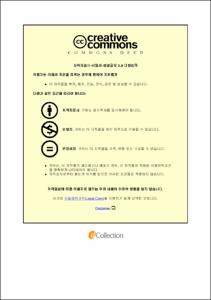FTA 미소기준 활용실태에 관한 연구
- Alternative Title
- A study on the utilization of the FTA De Minimis
- Abstract
- Due to the many free trade agreements and the internationalization of parts and production processes, rules of origin are becoming increasingly difficult. This makes it difficult to use the FTA. The FTA has exceptional provisions for the purpose of mitigating and complementing the strictness of the rules of origin. That is the Intermediate Materials, Accumulation, and the De Minimis. Even though the origin standard is not satisfied due to the specific inverse foreign material put into the product, the De Minimis is an exception rule that the product is recognized as the originating product when the proportion of the inputted foreign material is less than the level specified in the individual agreement. The De Minimis is to expand the scope of origin recognition.
However, the exception provisions and the De Minimis are also different according to the agreement, and the purpose of the exception provisions are not fulfilled. Especially, there is a lack of research on the De Minimis. Previous studies used literature and examples.
Therefore, this study attempted empirical analysis.
First, we surveyed shippers and customs brokers to understand how they use the De Minimis. The problems of the De Minimis rule were identified and the difficulties felt by the practitioners were identified. Second, the improvement of the De Minimis was derived. Finally, I tried to suggest some implications for the FTA negotiation.
The questionnaire is mainly shippers and customs brokers located in Busan. Frequency analysis, crossover analysis and kai test were conducted on 102 questionnaires. First, frequency analysis was performed on all questions, and the characteristics of the sample were shown. The company type is divided into shippers and customs brokers, and the utilization results are divided into users and non-users. Then, a cross-analysis and a kai test were conducted on shippers, customs brokers, users and non-users.
The results of the study are as follows.
First, the use of the De Minimis is lower than expected. Second, the level of awareness about the De Minimis was not very high. There were not many items that utilized smile criteria. Third, cross - examination of shippers and customs brokers showed a significant difference in response tendency between reasons of insufficient utilization and reasons of lack of education. In addition, there was no significant difference in response tendency between the problem of the De Minimis, the most necessary action, the pros and cons of revision, and the direction of revision. Fourth, crossover analysis between users and non - users showed a significant difference in response tendency in reasons of lack of use, reasons of lack of education, and revision direction. In addition, there was no significant difference in response tendency between the most needed action and the pros and cons.
This study has the following implications.
First, active consideration of shippers' FTAs and cost control for utilizing FTAs are very important for the utilization of the De Minimis. Second, we need to strengthen FTA education and PR for the people in charge. Third, if the amendment is made to the De Minimis, it will be the most practical way to increase the allowable rate of non-originating materials.
- Issued Date
- 2019
- Awarded Date
- 2019. 2
- Type
- Dissertation
- Keyword
- 미소기준 보충적 원산지결정기준 활용실태 기술통계분석 교차분석
- Publisher
- 부경대학교
- Alternative Author(s)
- Tae In Go
- Affiliation
- 부경대학교 대학원
- Department
- 대학원 국제통상물류학과
- Advisor
- 조찬혁
- Table Of Contents
- Ⅰ. 서론 1
1. 연구의 배경 및 목적 1
2. 연구의 방법 및 구성 4
Ⅱ. 이론적 배경 및 선행연구 검토 5
1. 미소기준 5
가. 미소기준의 개요 5
나. 미소기준 적용예시 및 최신 활용사례 9
2. 선행연구 11
가. 미소기준에 관한 선행연구 11
나. FTA 활용 설문에 관한 선행연구 12
Ⅲ. 연구설계 및 연구방법 14
1. 연구설계 및 연구방향 14
2. 설문조사 개요 및 분석 16
가. FTA 미소기준 활용분야 17
나. FTA 미소기준 인식분야 17
다. FTA 미소기준 애로사항 및 개선방안 분야 17
라. FTA 재협상 분야 18
3. 분석방법 19
Ⅳ. 분석결과 20
1. 표본의 일반적 현황 20
가. 설문응답자의 특성 20
나. 설문대상 기업의 특성 21
다. 미소기준 활용실태 23
라. 미소기준 인식수준 27
마. 미소기준 애로사항 및 개선방안 31
바. FTA 재협상을 통한 미소기준 개정 34
2. 교차분석 결과 36
가. 화주관세사 집단차이(업체형태)에 따른 교차분석 36
나. 활용실적 유무에 따른 교차분석 45
Ⅴ. 결론 51
1. 연구결과 요약 및 시사점 51
2. 연구의 한계 및 향후 연구방향 55
참고문헌 56
설문지 59
- Degree
- Master
- Appears in Collections:
- 대학원 > 국제통상물류학과-FTA비즈니스전공
- Files in This Item:
-
-
Download
 FTA 미소기준 활용실태에 관한 연구.pdf
기타 데이터 / 531.58 kB / Adobe PDF
FTA 미소기준 활용실태에 관한 연구.pdf
기타 데이터 / 531.58 kB / Adobe PDF
-
Items in Repository are protected by copyright, with all rights reserved, unless otherwise indicated.